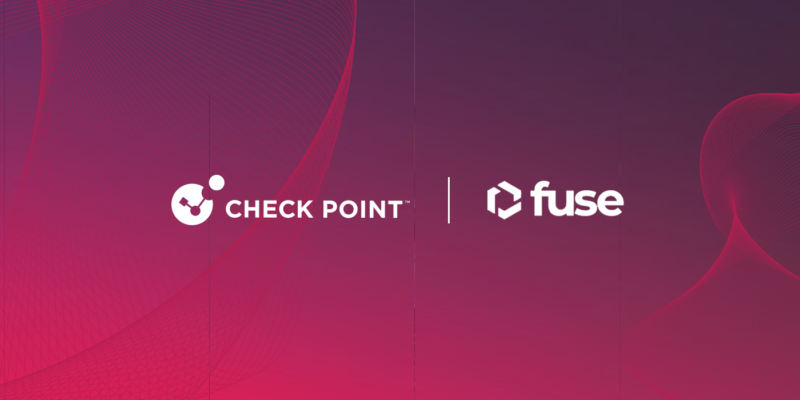
Check Point and Fuse to Deliver First Real-Time Blockchain Firewall
The rise of blockchain promises a more open, decentralized internet. But with that promise comes new risks—and so far, the security landscape hasn’t kept pace. In 2024 alone, crypto platforms lost over $2.2 billion to cyber attacks, with sophisticated exploits targeting everything from smart contracts to wallets. The cost isn’t just financial—it’s trust, adoption, and credibility.
Now, Check Point is changing that.
In partnership with Fuse Network, a Layer 2 blockchain designed for scalable, real-world crypto payments, Check Point is developing the first real-time blockchain firewall. This network-wide, prevention-first security layer is a milestone for the entire industry—and marks the first time an enterprise-grade cyber security leader is entering the Web3 space with infrastructure-level protection.
From Detection to Real-Time Prevention
Historically, Web3 has relied on reactive security: smart contract audits, monitoring, and alerts. But that approach simply isn’t enough to stop modern threats. Our collaboration with Fuse brings to market the first solution that shifts the focus from post-incident forensics to real-time threat prevention—a model proven in traditional IT environments, now tailored for decentralized ecosystems.
The firewall will act as an intelligent gatekeeper for transactions flowing across the network. Using Check Point’s AI-powered threat engines—trained on decades of threat intelligence—it will proactively monitor and block malicious transactions before they are confirmed.
This is not a plug-in. It’s not a patch. It’s embedded protection at the protocol and network level, capable of identifying and neutralizing threats before they are incorporated into the blockchain consensus.
Why This Is a Web3 First
There have been security solutions in Web3, but nothing like this.
This is the first time a major global cyber security company is entering the blockchain space with a real-time, infrastructure-wide firewall. It’s also the first time a Layer 2 blockchain is implementing this level of proactive security across its entire architecture—not just individual smart contracts.
What makes it different?
- Real-time threat prevention at the network level—before attacks land.
- Protection for smart contracts and wallets.
- AI-driven detection that adapts to evolving attack patterns.
- Sandbox-style inspection to stop malicious payloads before execution.
- Automation-first model that removes the need for manual response.
It’s Web2-grade security for the Web3 era—finally giving blockchain users the same protections that enterprises have come to rely on.
Why Fuse Chose Prevention-First Security
Fuse isn’t just another blockchain project. It’s a payments-focused Layer 2 network with a clear mission: to power real-world crypto transactions for businesses and developers. It already supports B2B and B2C applications such as loyalty programs, branded stablecoins, and mobile-first payment solutions.
But with growth comes risk. Fuse recognized that to attract institutional users and developers, it needed to go beyond the Web3 security status quo. That’s why it turned to Check Point—to integrate a best-in-class prevention layer directly into its infrastructure.
Fuse’s vision aligns with ours: security must be proactive, not reactive. That’s how we ensure crypto payments—and the platforms that power them—are trusted, scalable, and ready for enterprise adoption.
Comprehensive Protection That Goes Beyond Contracts
What makes this firewall a game-changer is its scope. Most blockchain security tools focus on individual contracts or rely on manual auditing. This solution provides holistic defense across the entire Fuse ecosystem.
That includes:
- Real-time intelligence pulled from global threat databases and tailored for Web3.
- Anomaly detection that flags unusual behavior patterns across wallets and nodes.
- Wallet and smart contract protection that covers user-facing applications and infrastructure.
- Automatic response to block exploits instantly, without human intervention.
This is the kind of security foundation that can enable Fuse—and others—to move from early-stage innovation to enterprise-grade infrastructure.
Security That Scales with Adoption
As Fuse continues to expand—most recently with the launch of its Ember Nodes governance and validation framework—this new security layer will play a critical role in protecting node operators and validating transactions across the network. The firewall ensures that threats are intercepted, before they affect consensus, wallets, or end users.
And as other blockchain ecosystems observe this model in action, we expect the shift from detection to prevention to accelerate.
A Blueprint for Web3 Security
The Check Point–Fuse partnership is about more than a product launch. It’s a signal that blockchain security has reached an inflection point. No longer is “good enough” security acceptable. The industry now has access to a prevention-first model that scales, adapts, and secures Web3 from the infrastructure up.
This is how we unlock the next wave of adoption—from developers to consumers, businesses to regulators. Because when security becomes invisible, trust becomes scalable.
This is what Check Point has done for Web2. And this is what we’re now bringing to Web3.



